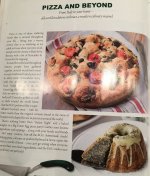Bob Marino said:Ok, I will open up another can of worms (no not in the food) but regarding sous vide and meats - if all you are doing after the sous vide (Yes I know suos vide makes the meats super, super tender) is very quickly searing the meats on high temps can't that be done - just as effectively taste wise on a gas grill? Yes I know, gas may only get to 600-700 degrees or so rather than the 900+ from ceramic, but that means the difference in searing time is maybe a minute or so and when only searing for such a short time how can the benefits of the smoky flavor be imparted on the food?
And wouldn't a good and properly reverse seared steak be more flavorful, not necessarily more tender, but more flavorful, than one cooked with sous vide?
I have yet to try sous vide but I've read of many finishing methods, be it hot fry pan, broiler, grill of choice and even blow torch



